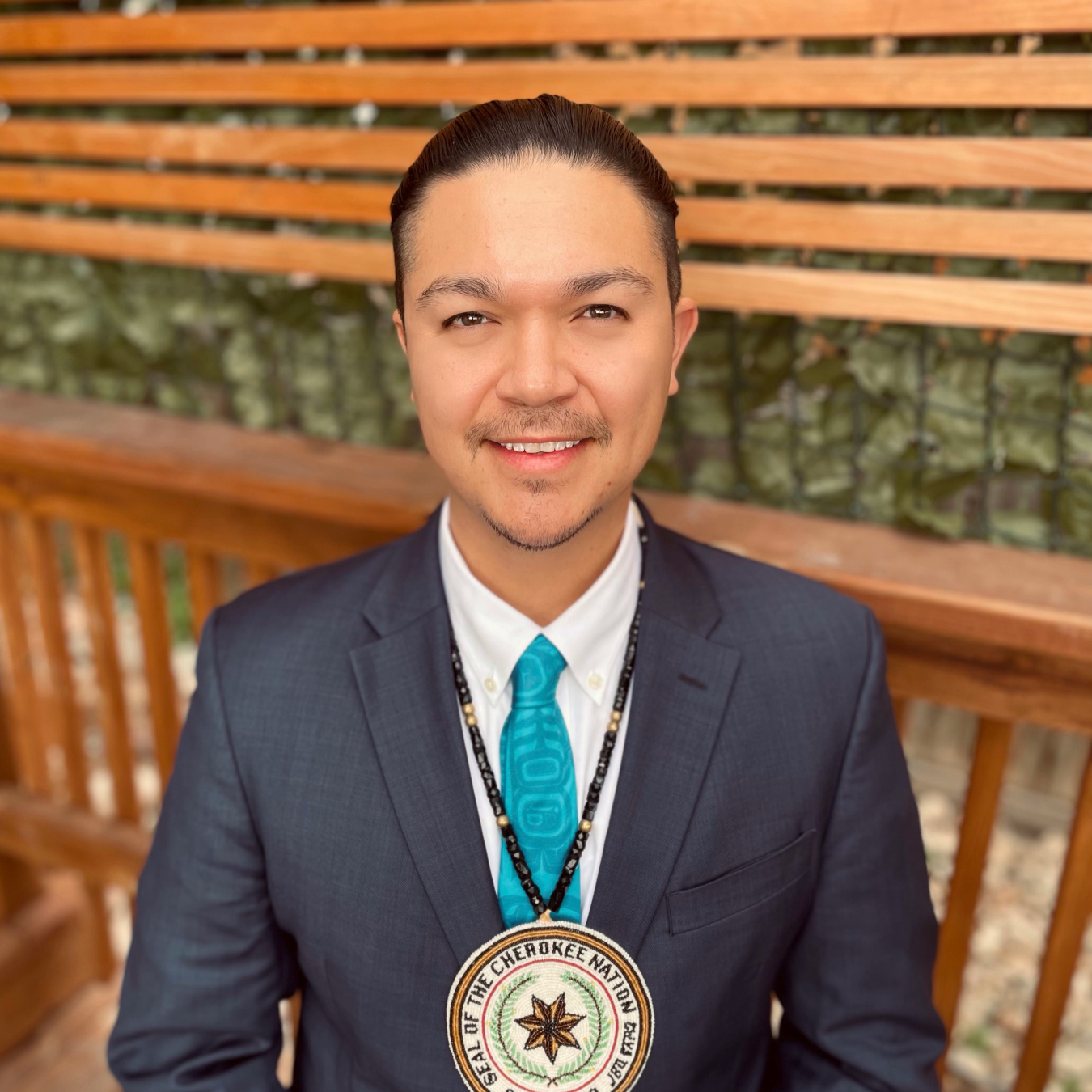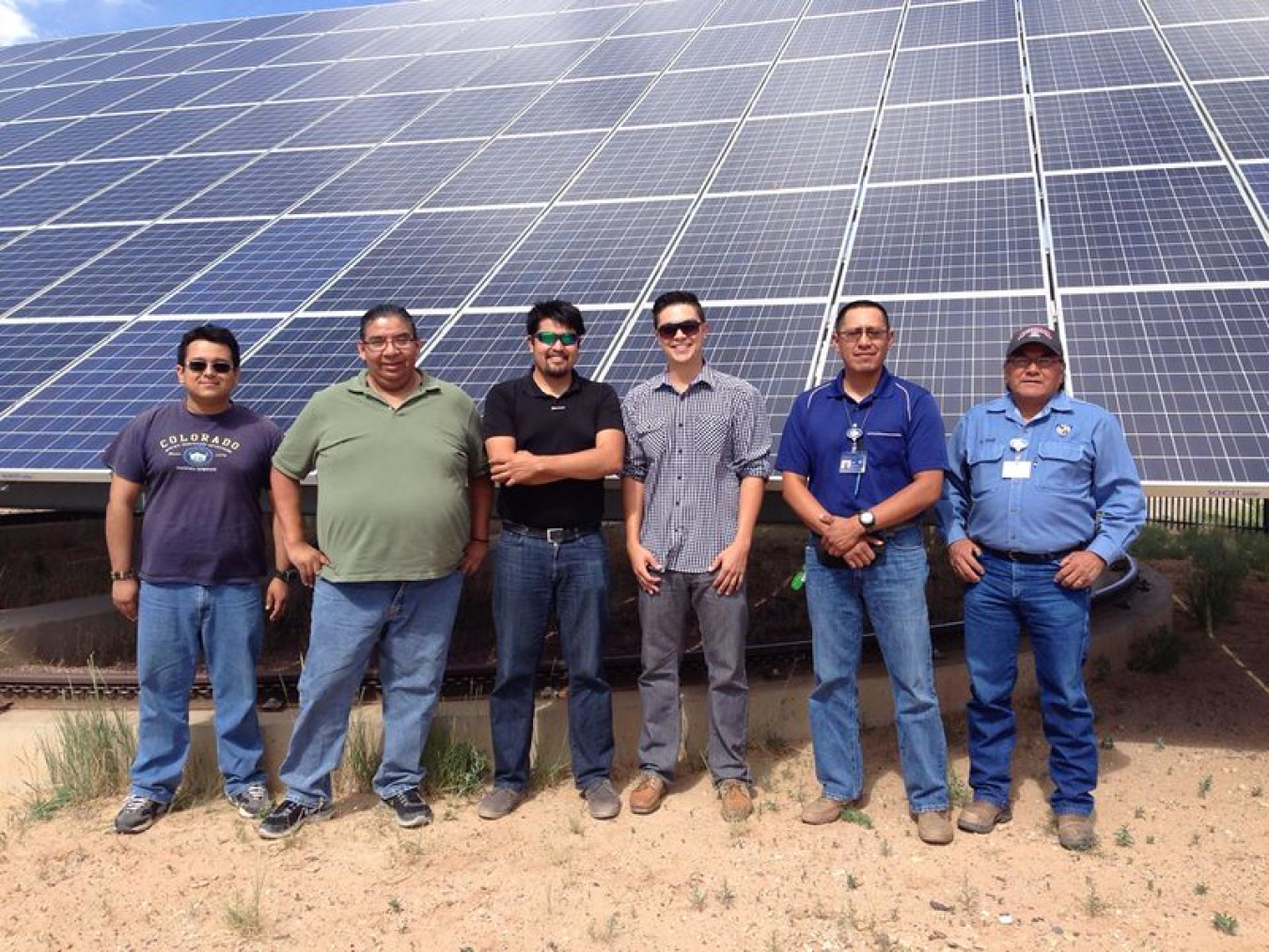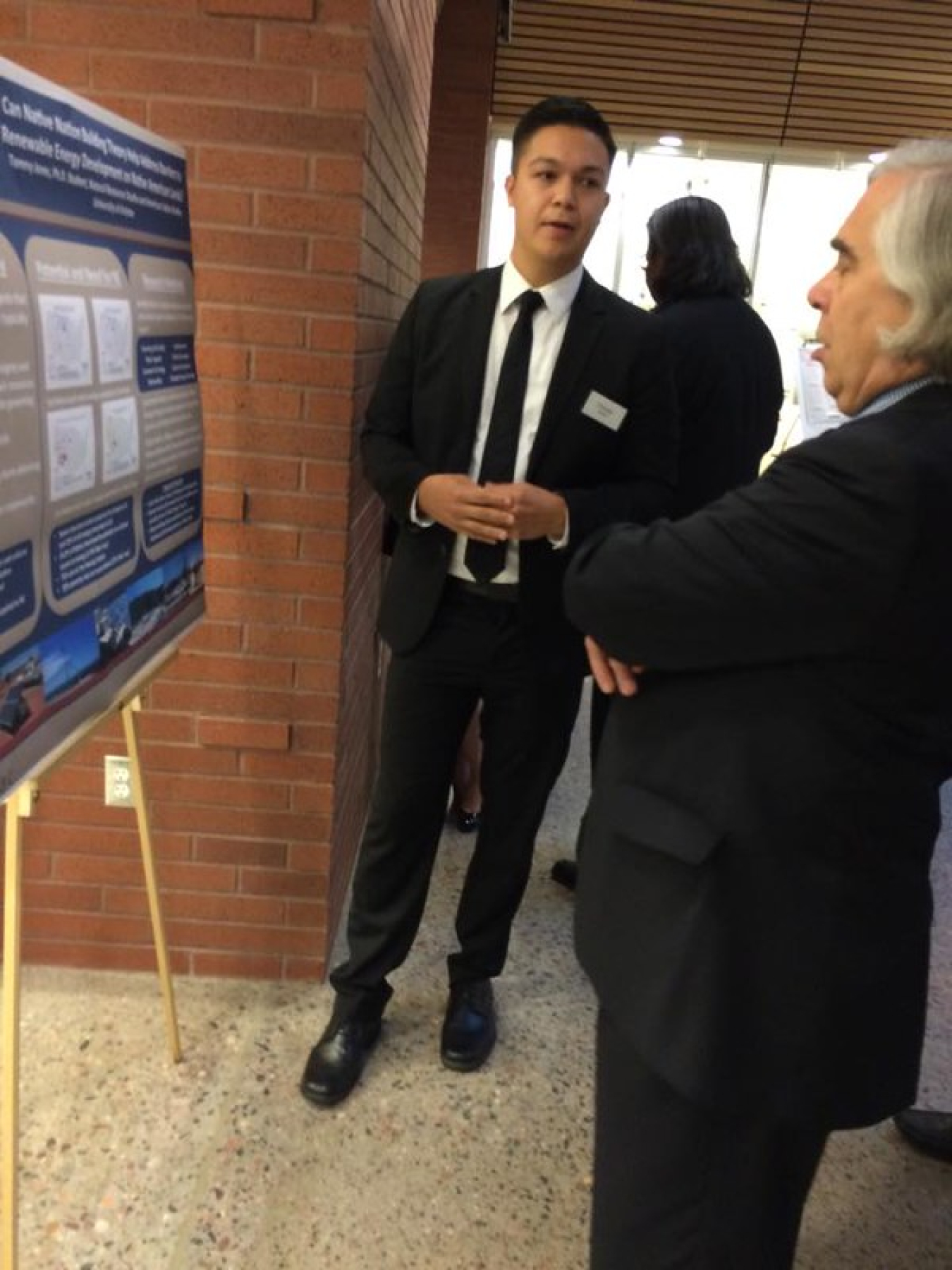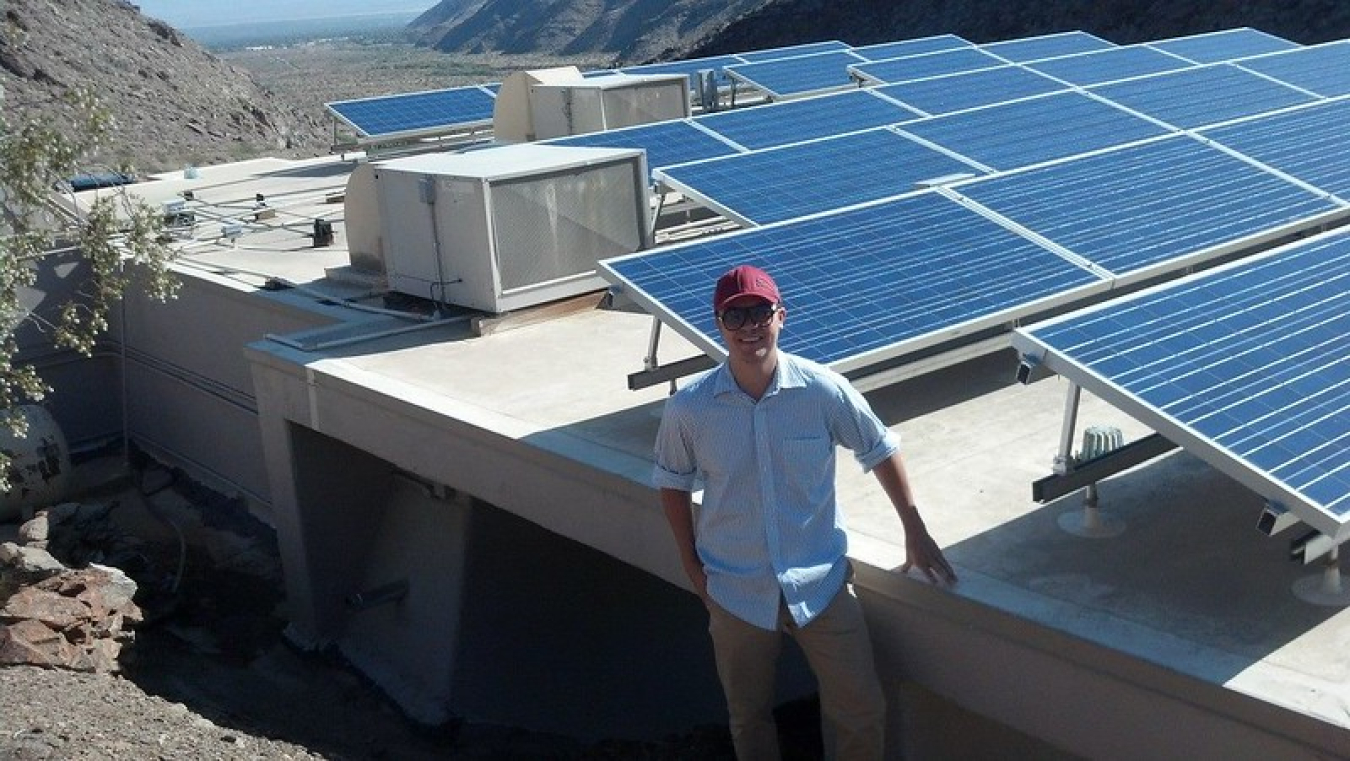From "Humble Beginnings," Jones applies passion for research to serve Indian Country.
Office of Indian Energy Policy and Programs
May 18, 2021From "Humble Beginnings," Jones Applies Passion for Research to Serve Indian Country
The team of federal employees supporting the U.S. Department of Energy (DOE) Office of Indian Energy Policy and Programs is small but mighty. In this "Meet Our Team" blog post series, we introduce key staff dedicated to the Office and its mission to support tribes in pursuing their energy visions.

Dr. Tommy Jones is the Deployment Specialist for the Office of Indian Energy. Read on to learn more about him and what motivates his impactful work in the Office of Indian Energy.
Tell us a bit about your background.
I’m from Jones, Oklahoma. On my mother's side, I am enrolled in Naknek Native Village of Alaska and a Native shareholder of Bristol Bay Native Corporation. On my father's side, I am an enrolled citizen of the Cherokee Nation of Oklahoma.
Like many others, I come from a very humble background, a background that has impacted every aspect of my life and who I am. I grew up at times without electricity, plumbing, heat—and we even briefly lived in a portable building. We called that portable building the "White House." As an adult, I’ve been able to step foot in the real White House. I have also had the opportunity to witness firsthand the strength and determination of tribal leaders and others who advocate for change for their people and their communities. These advocates for change are simultaneously inspiring as well as motivating.
My own journey has found education as a way to rise up from those humble beginnings. I have also been blessed with countless mentors and role models who have helped me get to where I am today. That journey began with my parents, who wanted a better life for me and my brother and always encouraged us in fulfilling our dreams. My parents, and their endless support, have been hugely instrumental in me being where I am today. I am thankful for them both and their support, love, and prayers.

Jones (fourth from left) served as an Office of Indian Energy intern with Sandia National Laboratories before joining the Office’s federal staff.
What do you do in your role for the Office of Indian Energy?
As the Deployment Specialist, my role is to support the Office of Indian Energy Deployment Supervisor in implementing the Deployment Program, which includes financial assistance, technical assistance, and education and outreach to tribal communities across the nation. Much of my work includes assisting the Deployment Supervisor with creating and implementing funding opportunity announcements and responding to requests and questions from tribes, other DOE offices, or other federal offices.
Research is something that I was trained for and enjoy—and have been fortunate to be able to bring to the Office. Being able to conduct research related to Indian energy, explore ways to better serve Indian Country, and increase my understanding of tribal communities and their needs are highlights of my job.

During his time as an intern, Jones had the opportunity to present his research to then-Secretary of Energy Ernest Moniz.
What do you find most inspiring about your work for the Office of Indian Energy?
When tribal communities invest in infrastructure, energy development, and energy efficiency, it is not only investing in their respective community's futures, it is investing in all of our futures. The progress made in Indian Country benefits all of us. Native people and tribal governments are resilient, determined, and capable. It is an honor to be able to work with tribes across the United States that are doing what it takes to realize their energy visions, and most importantly, creating changes in the lives of their people.
I know firsthand the real impacts our Office can make in people's daily lives, and I’m just happy to play a small role in helping Indian Country. I am inspired every day by the work we are doing.
What do you see as the greatest opportunities in tribal energy development today?
Financing and funding remain critical barriers to tribal communities achieving their energy visions. Barriers also vary depending on the type and scale of development. For example, infrastructure in general is lacking or dilapidated in many parts of Indian Country, and is essential for not only energy development, but also for economic growth.
Energy development, at its best, can be both a path to meeting community needs and a catalyst for economic development.
Tribal governments also have a whole host of considerations before committing to energy development and deployment. Among those considerations, tribal communities must weigh limited operating budgets, limited staff, cultural impacts, and even unforeseen impacts such as the recent pandemic. Addressing the financial and infrastructure barriers to energy development in Indian Country is not one size fits all, yet there are immense benefits to addressing both types of barriers.
How would you characterize the impact of DOE support on tribal energy development?
My perception is that the DOE Office of Indian Energy has been a reliable partner that works to continually respond to the needs and realities in Indian Country. Many tribal communities across Indian Country have received either funding or technical assistance from our Office. Yet, no one in our office believes that we supplant the tremendous work that tribal energy champions do to see their energy projects through to fruition. Respecting and acknowledging our tribal partners, while recognizing that we must adapt to the current realities in Indian Country, has made a positive impact over the years.
On the federal side, our Deployment Supervisor, Lizana Pierce, has dedicated her life’s work to ensuring that not only do we have the best interest of tribes in mind, but also that taxpayer dollars are being utilized effectively. She is definitely an asset and ally to Indian Country and has helped guide DOE's support for tribal energy development.

Jones had the opportunity to visit several renewable energy installations during his internship.
How have you seen the technical and economic support provided by the Office of Indian Energy impacting people's lives?
Reliable and cost-effective electricity is integral to building tribal economies, and in turn affects the daily lives of tribal members across the country. It should be noted that not everyone wants the same level of electrical service; however, everyone in this country should have the choice and be able to access this basic service that most people enjoy. That choice is supported by this Office through our technical and financial assistance, which is assistance to best meet tribal needs as defined by tribes.
We have seen numerous tribes going from planning to installing energy systems, and from experiencing energy problems to solving those problems. Technical and financial support from our Office, in my opinion, assists Tribes in achieving their specific goals quicker and most effectively, as well as providing Tribes a forum to share their experiences, and learn from each other at our annual Program Review.
What do you see looking ahead to the future of energy in Indian Country?
In many ways Indian Country can and will lead the charge in terms of community or place-based energy and economic development. We are already seeing this in many tribal communities with tribal utility formation, emergency preparedness, and community-based energy development.
Tribal communities are continuously improving their energy knowledge and skills, and in turn, giving back in many ways to their communities and Indian Country, as a whole.
Tribes are strengthening their human capacity and local communities by investing in energy resiliency and reliability for current and future generations. Tribes play a critical role in advancing the social well-being of their communities, and I see that progress and knowledge spreading beyond tribal boundaries to other communities and economies nationwide and globally.

